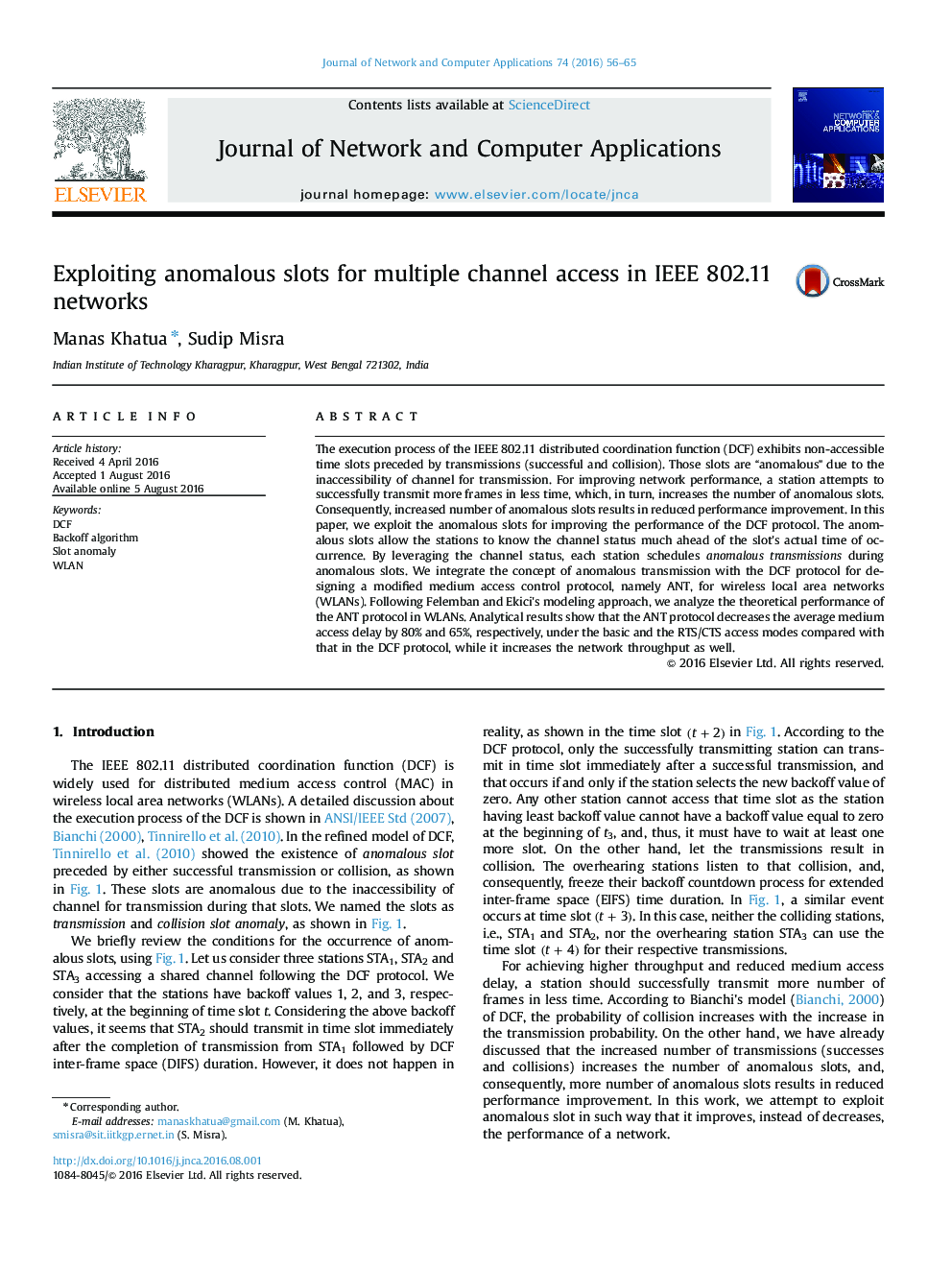| Article ID | Journal | Published Year | Pages | File Type |
|---|---|---|---|---|
| 4956158 | Journal of Network and Computer Applications | 2016 | 10 Pages |
The execution process of the IEEE 802.11 distributed coordination function (DCF) exhibits non-accessible time slots preceded by transmissions (successful and collision). Those slots are “anomalous” due to the inaccessibility of channel for transmission. For improving network performance, a station attempts to successfully transmit more frames in less time, which, in turn, increases the number of anomalous slots. Consequently, increased number of anomalous slots results in reduced performance improvement. In this paper, we exploit the anomalous slots for improving the performance of the DCF protocol. The anomalous slots allow the stations to know the channel status much ahead of the slot's actual time of occurrence. By leveraging the channel status, each station schedules anomalous transmissions during anomalous slots. We integrate the concept of anomalous transmission with the DCF protocol for designing a modified medium access control protocol, namely ANT, for wireless local area networks (WLANs). Following Felemban and Ekici's modeling approach, we analyze the theoretical performance of the ANT protocol in WLANs. Analytical results show that the ANT protocol decreases the average medium access delay by 80% and 65%, respectively, under the basic and the RTS/CTS access modes compared with that in the DCF protocol, while it increases the network throughput as well.
